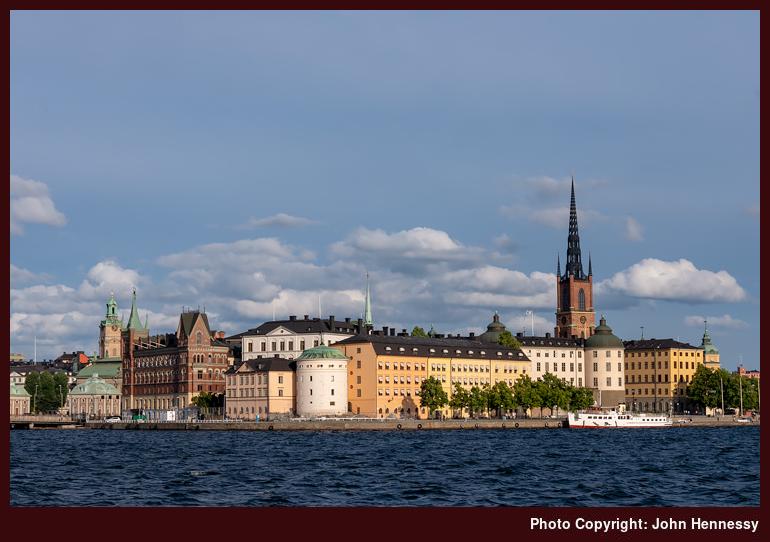Riddarholmen, Gamla Stan, Stockholm, Sweden

Riddarholmen was one of the sights that caught my eye as I looked across the Riddarfjarden from beside Stadshuset, Stockholm's city hall. The name of Riddarholmen translates in English as "nobility island" since the seventeenth century, when it was donated to nobleman and distinguished officers. The previous name was Kidskär, and it originally was a place for grazing cattle before it became home to Greyfriars' Abbey and got renamed Grämunkeholmen as a result. Until the Reformation and the consequent abolition of the monastery, the abbey church was used for royal burials and there still is a church on the site of the monastery today. A fire in 1835 meant that the spire of the Riddarholmskyrkan gained the cast iron lattice-like spire that you see rising up towards the right of the photo. Royal burials continued to take place there following the Reformation and there is an external burial vault attached to the church.
In front of the church tower, there is a smaller round tower that was built as part of a fortification with stone from the St. Klara convent on Normalm around 1530. Its name of Birger Jarls Torn dates from the nineteenth century though when some got to thinking that it had been around for six hundred years. That linked it with a foundation myth for the city of Stockholm by Birger Jarl, when a log supposedly was floated on Lake Mälaren by the inhabitants of the town of Stiguna after a fire in 1187 and drifted onto the shore of Riddarholmen. In Swedish, stock means log, so it is possible to translate the city's name into English as "little island of the log".
Towards the left, there is building with what appears to be a lot of red brick and this houses Norstedts, a major publisher in Sweden. The business has been going since 1823 and publishes a wide range of books with Stieg Larsson seeing a mention on their website, and they publish walking map on behalf of Landmateriet too. Their distinctive headquarters was built between 1882 and 1889 and has one tower topped with a very unusual roof, a sort of whaleback affair turned at an angle to the front of the building.
See more photos from this album (Sweden)